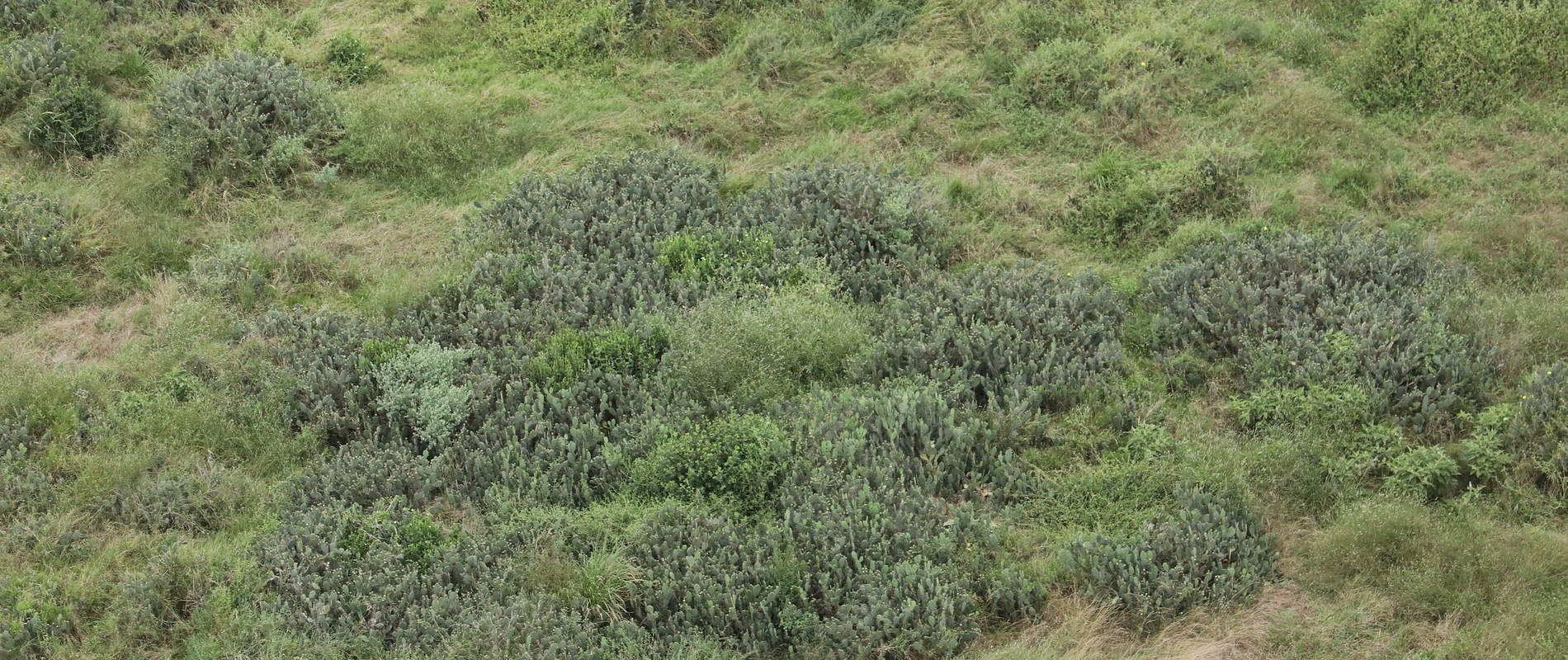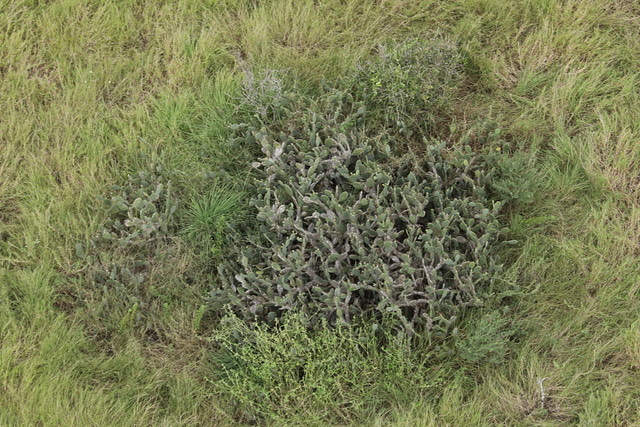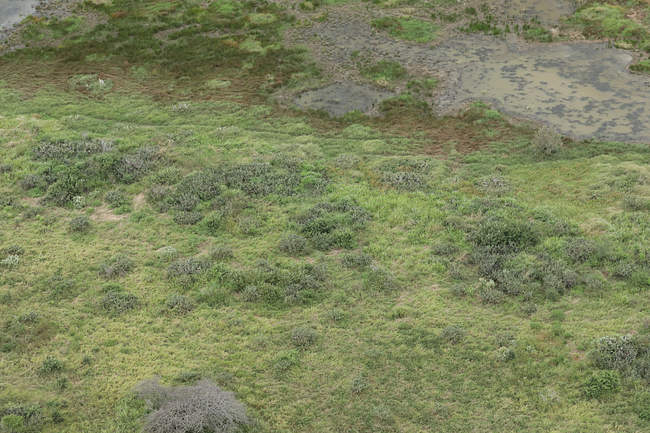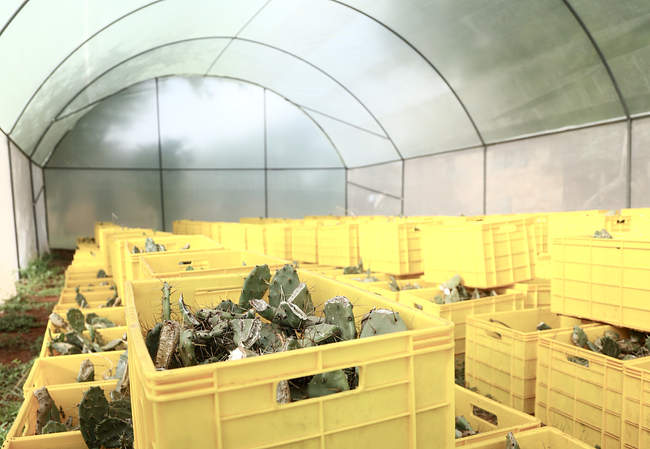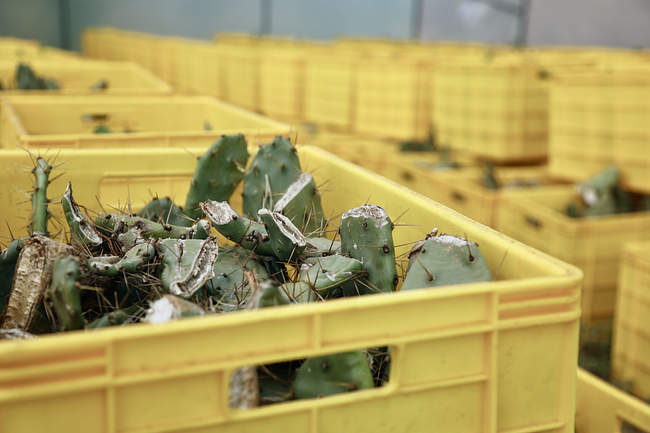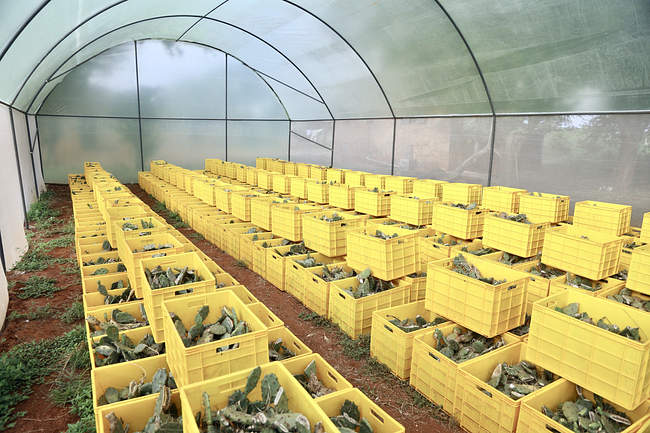In the past, the Sheldrick Wildlife Trust has provided limited services in the Kibwezi Forest and Tsavo East National Park in terms of invasive species management.
In the Kibwezi Forest, following repeated exercises conducted by the Trust that employed means of mechanical removal, we are fairly confident that the highly invasive Prosopis juliflora tree has been eliminated entirely from the area. It had occurred most extensively along the highway, however had begun to spread into the Forest. Removal exercises were carried out over several years and to date there have been no new observations.
In Tsavo East, we have been carrying out similar exercises to remove the even more invasive Opuntia stricta, or prickly pear cactus as it is commonly known, which now occurs throughout the Southern Sector of Tsavo East from the Voi River down to Bachuma, and even North of the Voi River in a few places (see map below for area affected). Initially our efforts were focused on mechanical removal around the KWS Voi Headquarters, ripping out plants by hand and leaving them on top of corrugated iron sheets to dry; however, as of 2019, with the appropriate permissions from Kenya Wildlife Service, we have embarked on a massive effort to deploy a biological agent to control the cactus more efficiently and effectively.

There is a cochineal (insect) that feeds exclusively on Opuntia cacti and favours the species of Opuntia that occurs in Tsavo. With little effort this cochineal, Dactylopius opuntiae, can be rapidly bred in a greenhouse environment and is then deployed by a small team of individuals to around a thousand locations in the Park, from where the cochineal will spread naturally and consume cacti to the point of death. This form of control has been used successfully in other parts of the world that have suffered similar infestations of Opuntia and apart from being more effective than mechanical removal, due to the cacti’s ability to regenerate from next-to-nothing, it is a much more cost-effective method of control.
To achieve the greatest outcome, the Trust has invested in an 8m x 15m greenhouse, installed near the epicentre of the Opuntia’s spread, at Bachuma. The cochineal will be bred on harvested opuntia cladodes (leaves) in plastic crates which can be easily transferred onto the bed of a pickup truck and transported to each of the dispersal sites. The team will place one infected cladode at the base of several plants at each site and the cochineal will reproduce and spread naturally from here, eventually killing the plant and those around it. The team will return to the greenhouse with fresh cladodes, which will in turn be infected in the greenhouse. The use of the greenhouse allows for the cochineal to be bred in ideal, hot and dry, conditions so that when deployed, the cochineal will have the greatest chance of infecting its host. A special thanks must go out to Tom Sylvester from Loisaba Conservancy who provided the original cochineals and much-needed advice and expertise.

A KWS researcher will be seconded to the project to carry out careful monitoring, ensuring a correct implementation and detailed tracking of the project’s success.
KWS has asked the SWT to roll this project into a larger, more general, invasive species management team so that other species can also be dealt with. Notably, Prosopis juliflora, which has also spread into Tsavo East via the Voi River and now occurs several kilometres into the Park. We will draw on past successes in the Kibwezi Forest to address the P. juliflora invasion in Tsavo East, and hopefully, by partnering with KWS and local women’s groups, create opportunities for community members to benefit from an eco-charcoal programme as a means to improve livelihoods while also subsidising the cost of removal. Providing an environmentally responsible alternative to what is generally a terribly destructive industry is another driving motivation here. Huge amounts of Kenya’s indigenous forest are lost every year to unsustainable charcoal production, with slow growing hardwood trees being particularly vulnerable.
Due to sensitivities of working in a protected area, it is unlikely that a charcoal programme will be carried out within the boundaries of the Park; however, an important aspect of the project’s success will hinge on also eradicating the tree/shrub where it occurs in Voi town and along the Voi River upstream from the Park boundary. If we do not address the tree here, removing it from the Park will be pointless, since it would inevitably spread back into the Park as P. juliflora is a prolific seeder.
Other invasive species will also be tackled as appropriate or indeed realistic.
